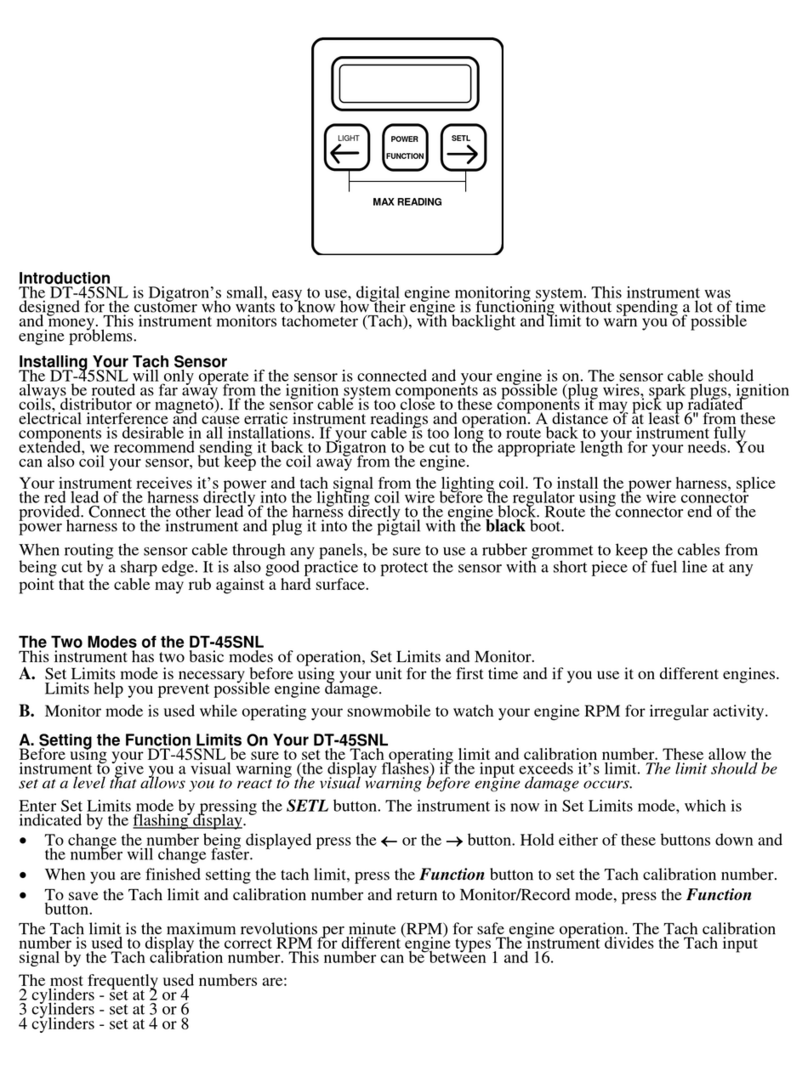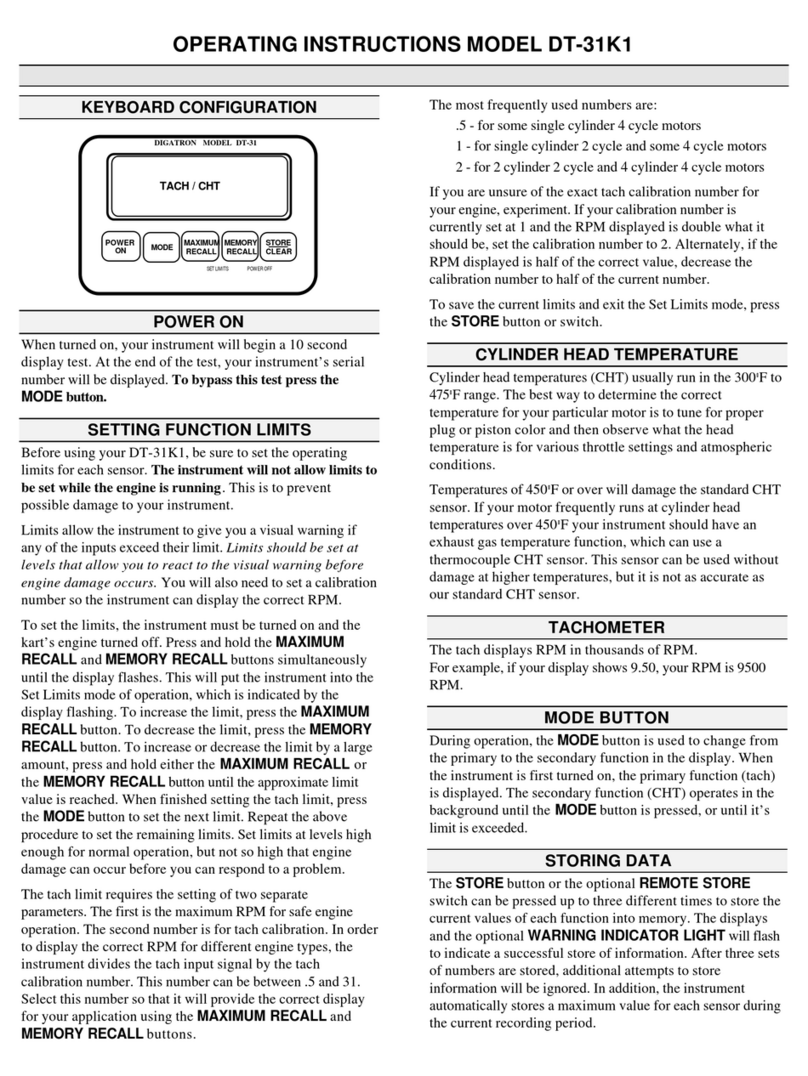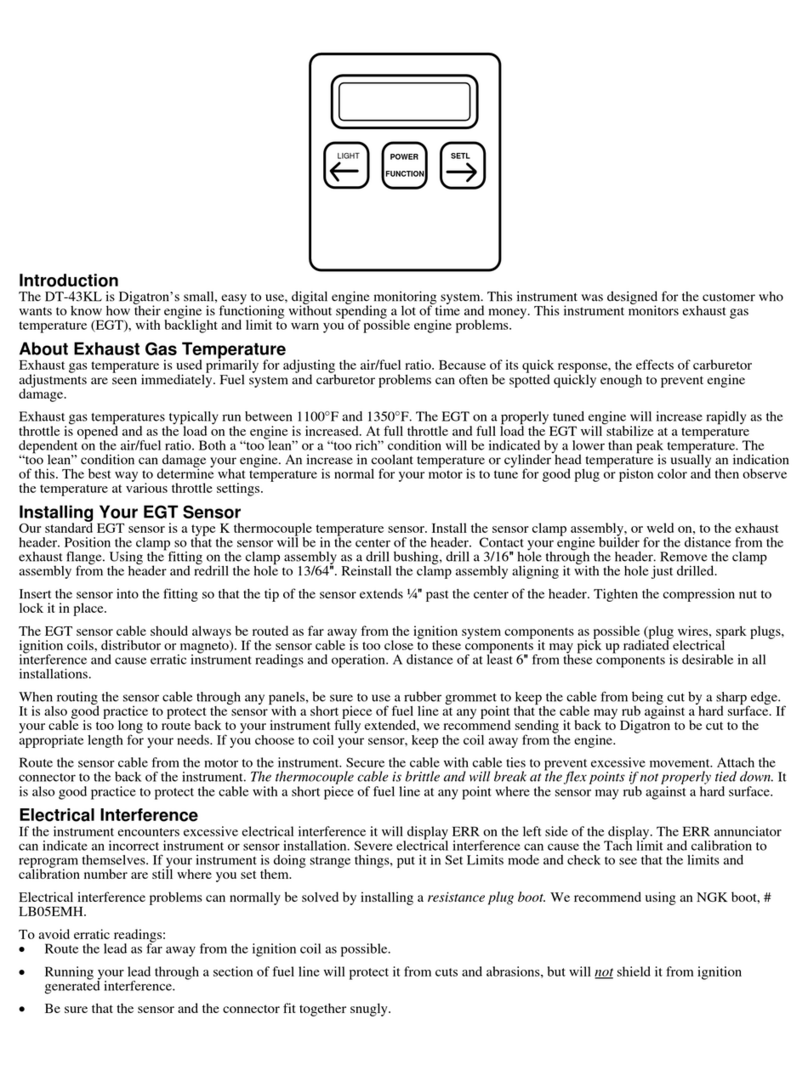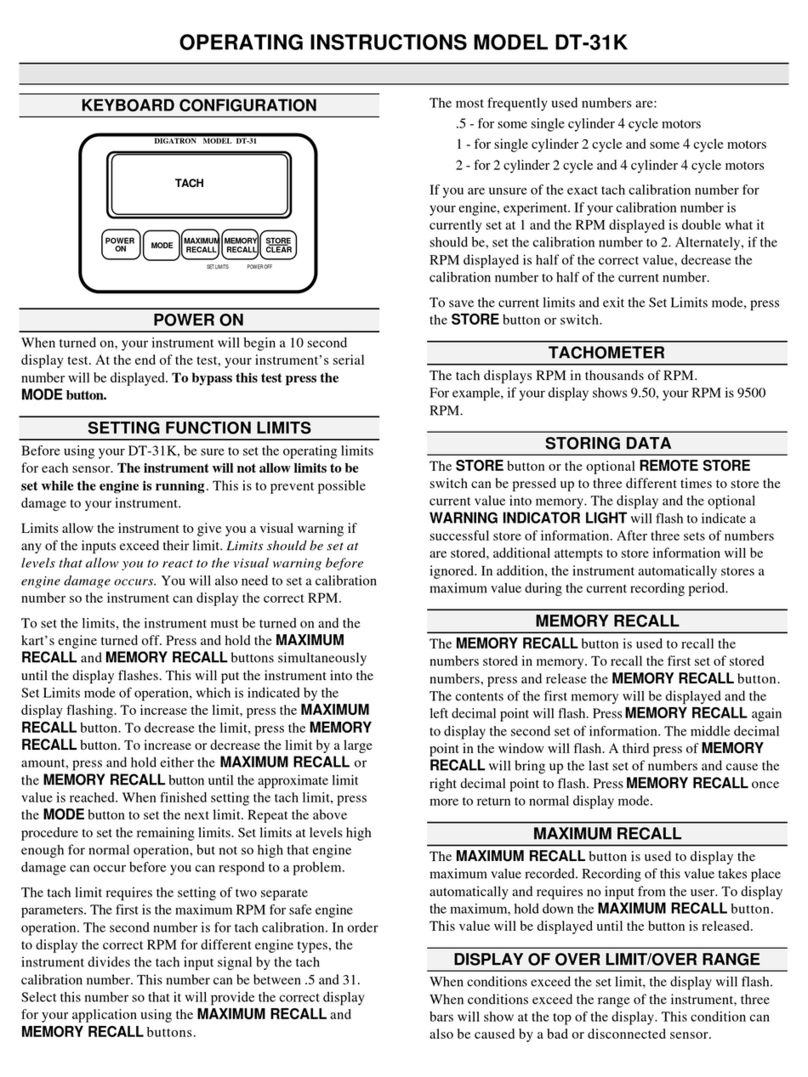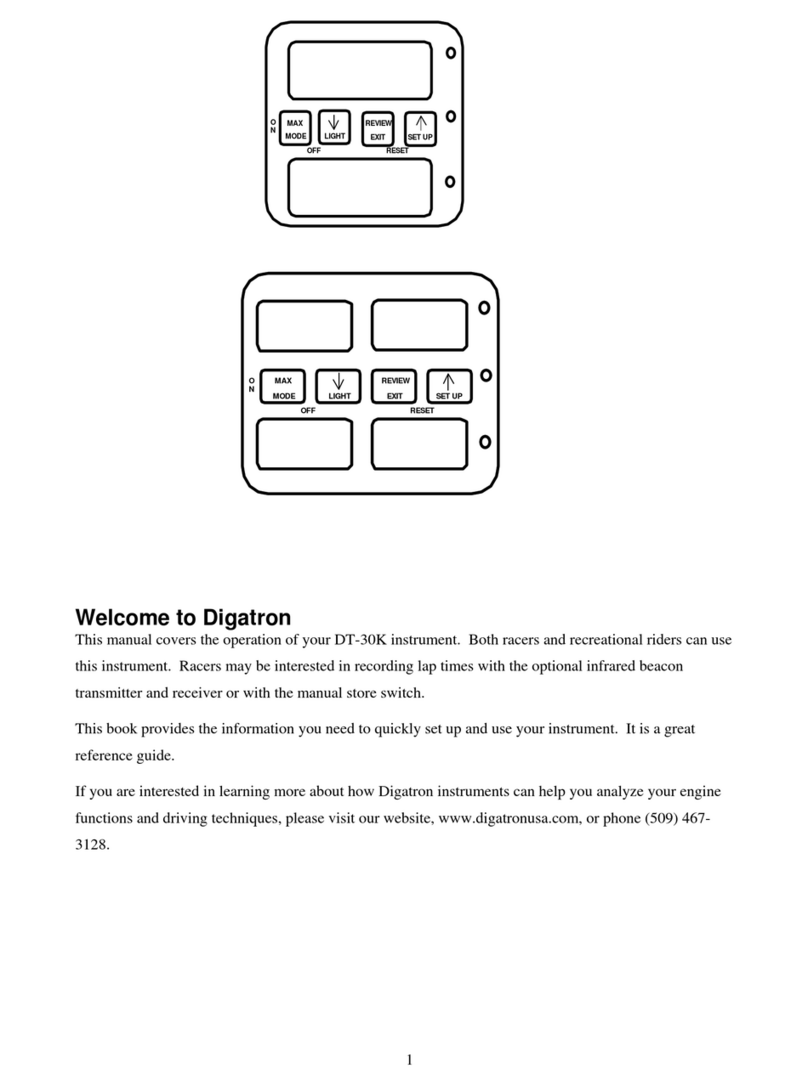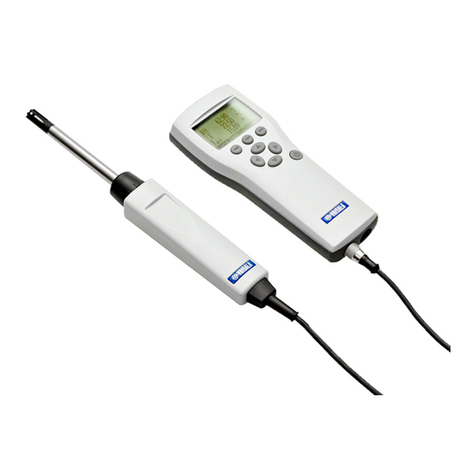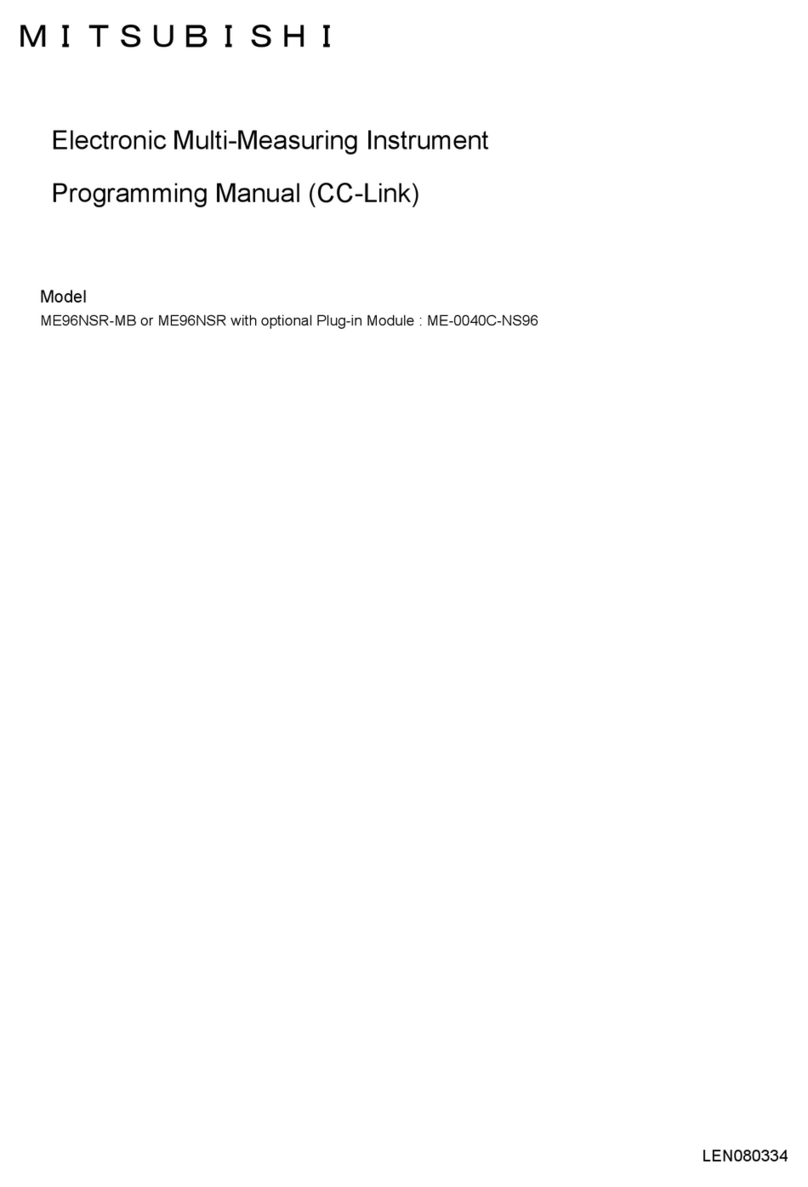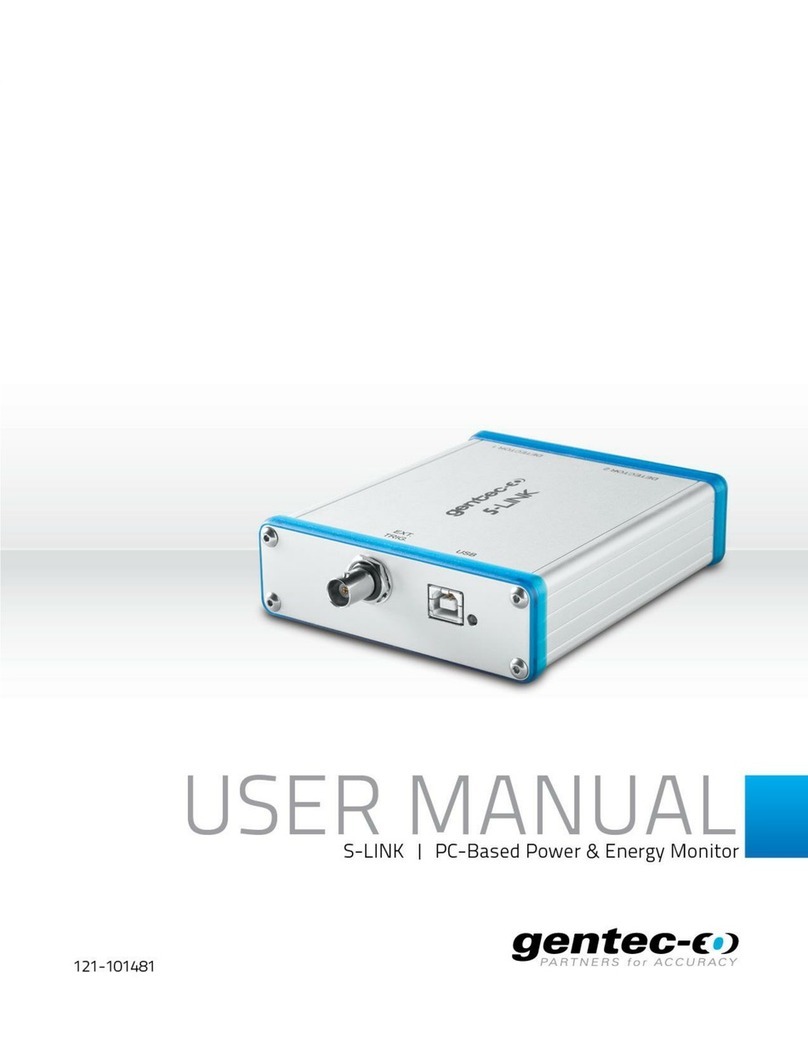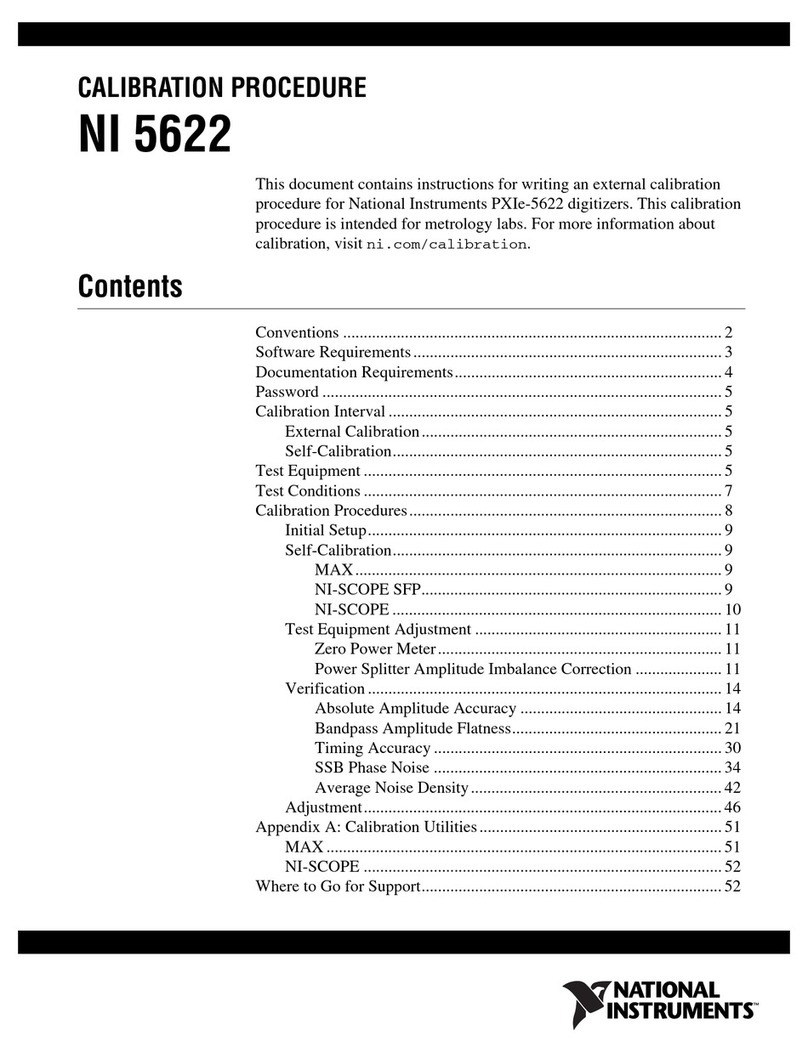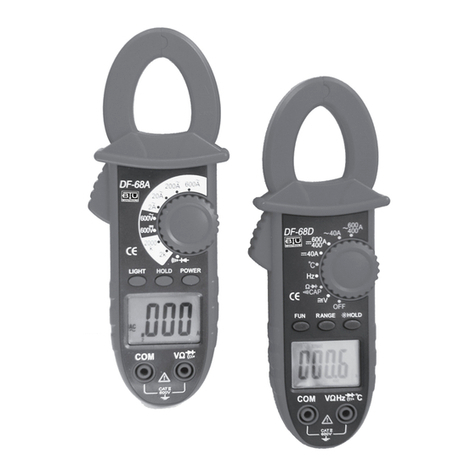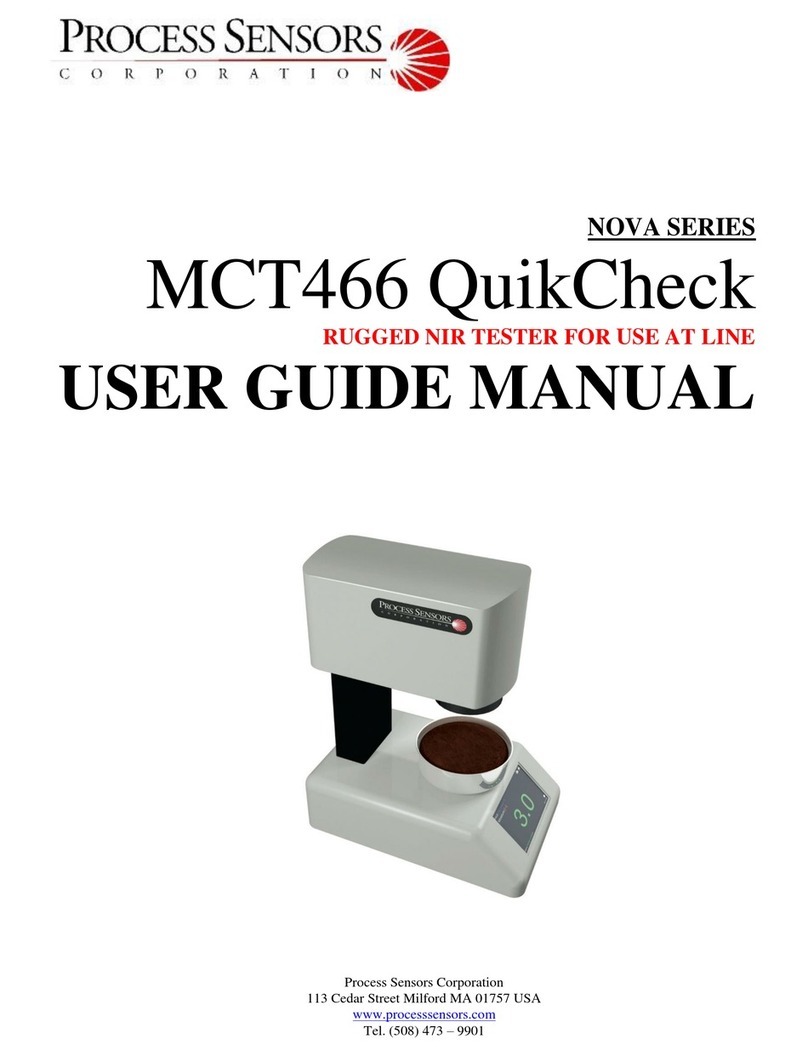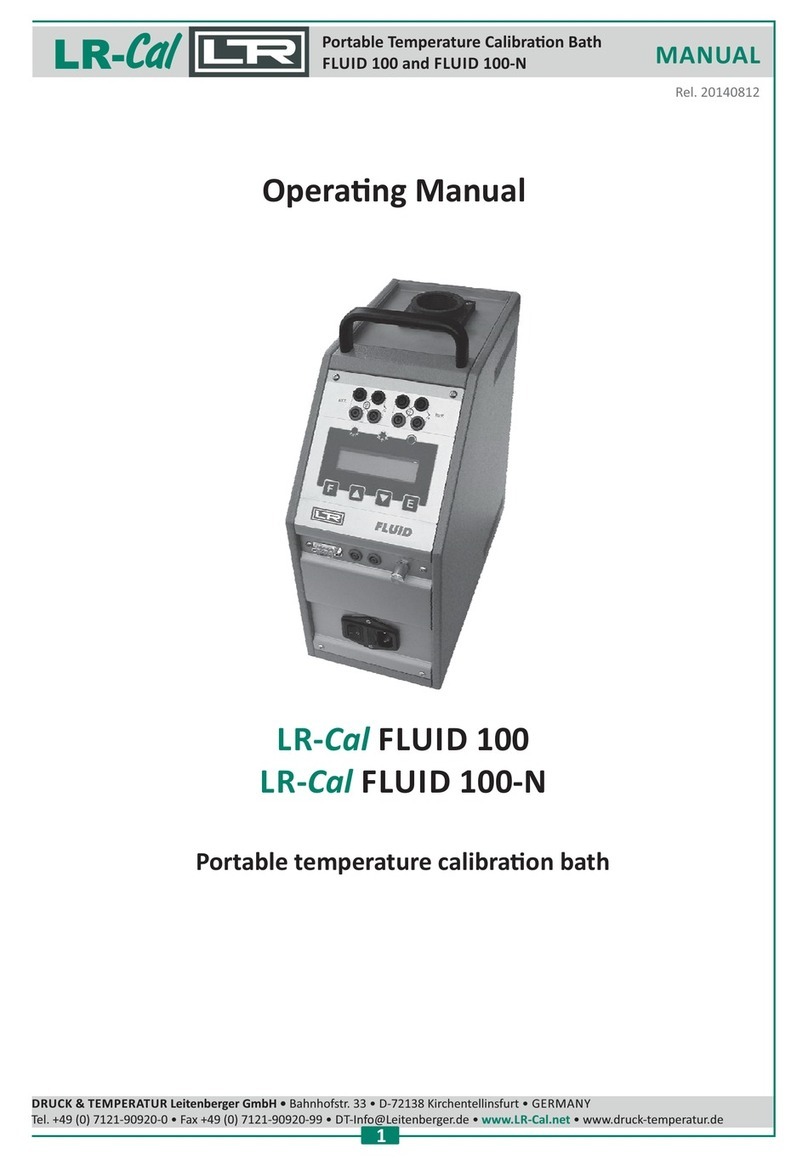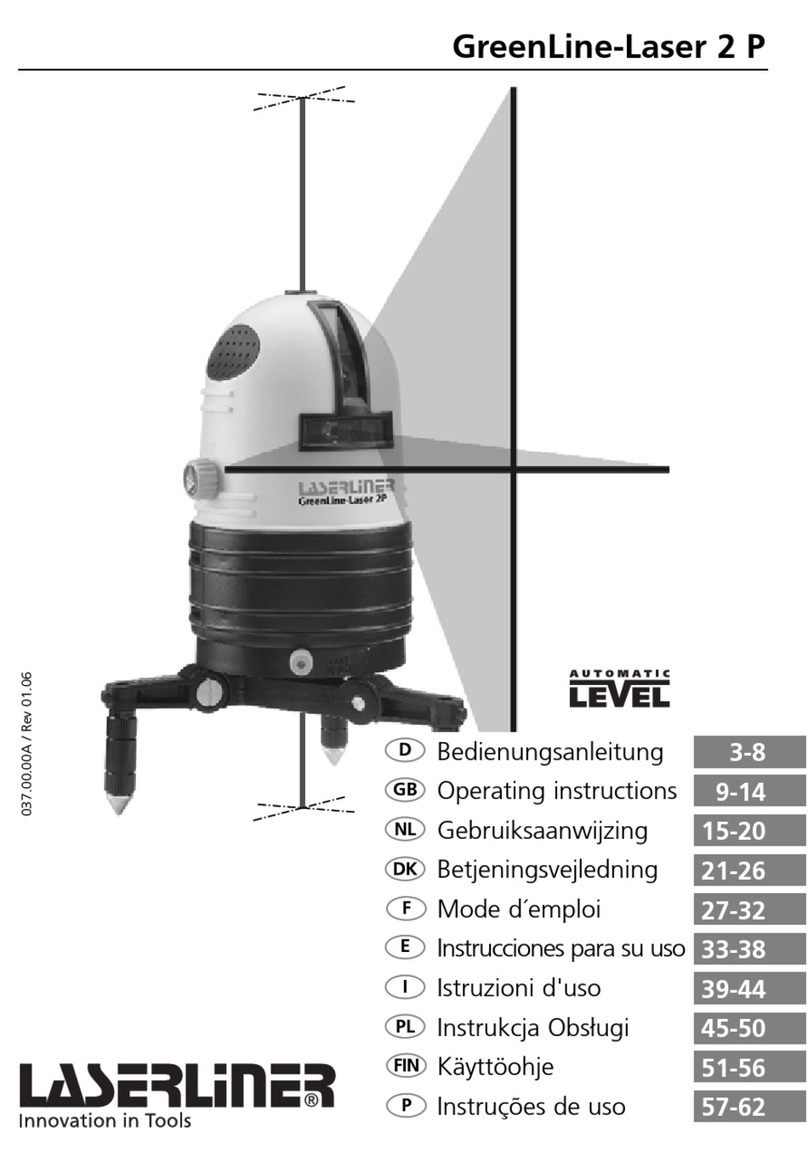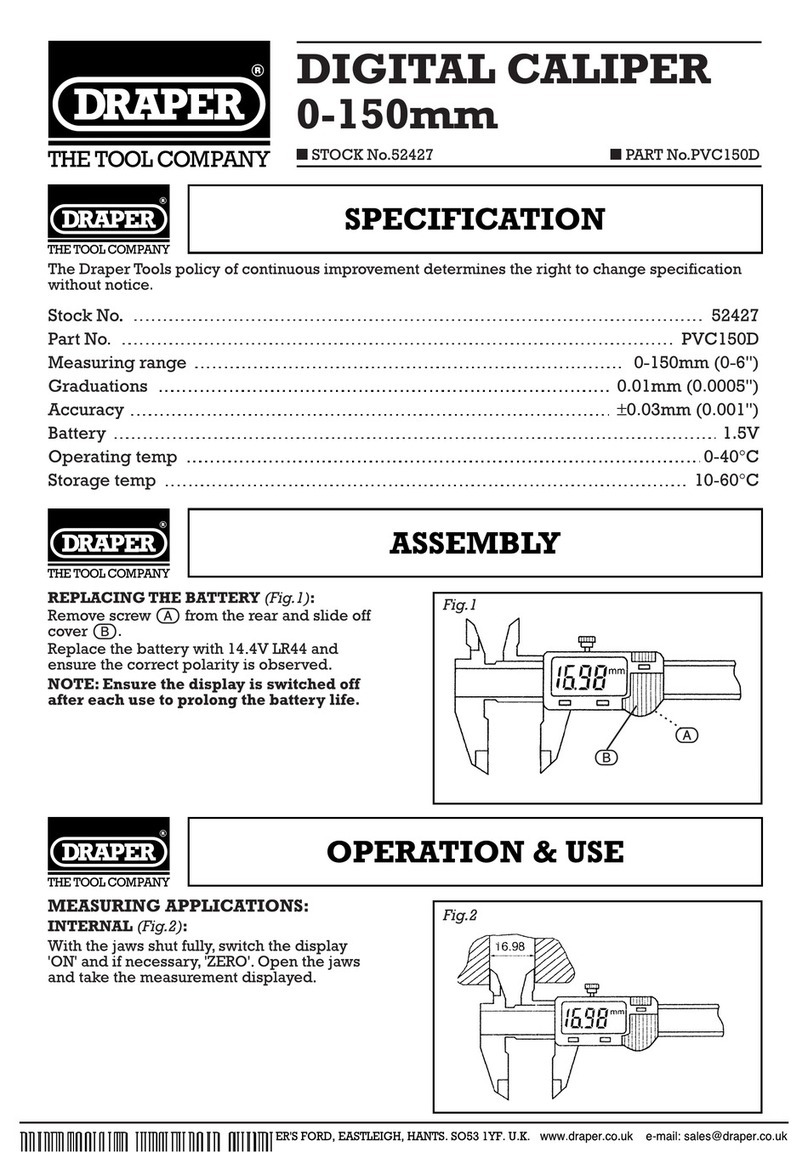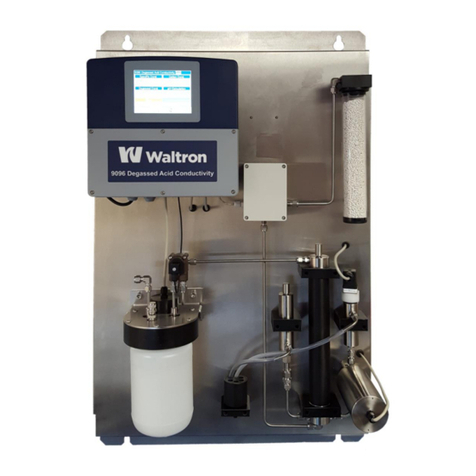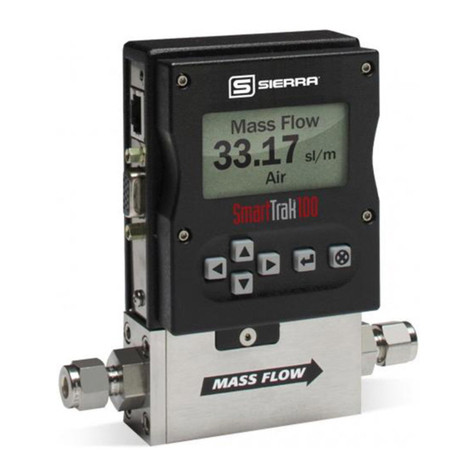Digatron DT-31SN2 User manual

OPERATING INSTRUCTIONS MODEL DT-31SN2
KEYBOARD CONFIGURATION
POWER
ON
DIGATRON MODEL DT-31
TACH / EGT
MODE RECALL
MAXIMUM STORE
POWER OFFSET LIMITS
CLEAR
MEMORY
RECALL
POWER ON
When turned on, your instrument will begin a 10 second
display test. At the end of the test, your instrument’s serial
number will be displayed. To bypass this test press the MODE
button.
SETTING FUNCTION LIMITS
Before using your DT-31SN2, be sure to set the operating limits
for each sensor. The instrument will not allow limits to be set
while the engine is running. This is to prevent possible
damage to your instrument. Usually the instrument will turn on
without turning your engine on.
Limits allow the instrument to give you a visual warning if any
of the inputs exceed their limit. Limits should be set at levels
that allow you to react to the visual warning before engine
damage occurs. You will also need to set a calibration number
so the instrument can display the correct RPM.
To set the limits, the instrument must be turned on and the
sled’s engine turned off. Press and hold the MAXIMUM
RECALL and MEMORY RECALL buttons simultaneously
until the display flashes. This will put the instrument into the
Set Limits mode of operation, which is indicated by the display
flashing. To increase the limit, press the MAXIMUM RECALL
button. To decrease the limit, press the MEMORY RECALL
button. To increase or decrease the limit by a large amount,
press and hold either the MAXIMUM RECALL or the
MEMORY RECALL button until the approximate limit value is
reached. When finished setting the tach limit, press the MODE
button to go to the next value, which is the tach calibration
number.
The tach calibration number enables the instrument to display
the correct RPM for different engine types. The instrument
divides the tach input signal by the tach calibration number.
This number can be between .5 and 31. Select this number so
that it will provide the correct display for your application
using the MAXIMUM RECALL and MEMORY RECALL
buttons.
Find the correct tach calibration number for your sled by
determining how many poles your lighting coil has and divide
this number by two. This is your tach calibration number.
The most frequently used numbers are:
2 cylinders - set at 2 or 4
3 cylinders - set at 3 or 6
4 cylinders - set at 4 or 6
If you are unsure of the exact tach calibration number for your
engine, experiment. If your calibration number is currently set at
2 and the RPM displayed is double what it should be, set the
calibration number to 4. Alternately, if the RPM displayed is
half of the correct value, decrease the calibration number to half
of the current number.
To save the current limits and exit the Set Limits mode, press
the STORE button or switch.
TACHOMETER
The tach displays RPM in thousands of RPM. For example, if
your display shows 9.50, your RPM is 9500 RPM.
EXHAUST GAS TEMPERATURE
Exhaust gas temperature (EGT) is used primarily for adjusting
the air/fuel ratio. Because of its quick response, the effects of
carburetor adjustments are seen immediately. Fuel system and
carburetor problems can often be spotted quickly enough to
prevent engine damage.
Exhaust gas temperatures typically run between 1100°F and
1350°F. The EGT on a properly tuned engine will increase
rapidly as the throttle is opened and as the load on the engine
is increased. At full throttle and full load the EGT will stabilize
at a temperature dependent on the air/fuel ratio. Both a “too
lean” or a “too rich” condition will be indicated by a lower than
peak temperature. The “too lean” condition can damage your
engine. An increase in coolant temperature or cylinder head
temperature is usually an indication of this. The best way to
determine what temperature is normal for your motor is to tune
for good plug or piston color and then observe the temperature
at various throttle settings.
MODE BUTTON
During operation, the MODE button is used to change from the
primary to the secondary function in the top display. When the
instrument is first turned on, the primary function (tach) is
displayed. The secondary function (EGT) operates in the
background until the MODE button is pressed or until it’s limit
is exceeded.
STORING DATA
The STORE switch or the optional REMOTE STORE switch
can be pressed up to three different times to store the current
values of each function into memory. The display and the
optional WARNING INDICATOR LIGHT will flash to indicate
a successful store of information. After three numbers are
stored, additional attempts to store information will be ignored.
In addition, the instrument automatically stores a maximum tach
value during the current recording period.

MEMORY RECALL
The MEMORY RECALL button is used to recall the numbers
stored in memory. To view the secondary function, press the
MODE button at any time.
To recall the first set of stored numbers, press and release the
MEMORY RECALL button. The contents of the first memory
will be displayed and the left decimal point will flash. Press
MEMORY RECALL again to display the second set of
information. The middle decimal point will flash. A third press
of MEMORY RECALL will bring up the last set of numbers
and cause the right decimal point to flash. PressMEMORY
RECALL once more to return to display mode.
MAXIMUM RECALL
The MAXIMUM RECALL button is used to display the
maximum value recorded for each input during the current
recording period. Recording of this value takes place
automatically and requires no input from the user. To display
the maximum, hold down the MAXIMUM RECALL button.
This value will be displayed until the button is released.
Press the MODE button to display the secondary function
(EGT). Then press the MAXIMUM RECALL button to display
the maximum for this function.
DISPLAY OF OVER LIMIT/OVER RANGE
When conditions exceed the set limits, the display will flash.
The instrument automatically switches to this function if it is
not being displayed.
When conditions exceed the range of the instrument, the
display will show three bars at the top of the display. This
condition can also be caused by a bad or disconnected sensor.
BACKLIGHT
The Backlight can be turned on and off by pressing the
MAXIMUM RECALL and MODE buttons at the same time.
When your motor is turned off, the Backlight is automatically
turned off to conserve internal battery power.
OPTIONS
There are two optional features that can be added to your DT-
31SN2. To have either of these options added to your
instrument, send it to the address at the end of these
instructions.
WARNING INDICATOR LIGHT
The optional WARNING INDICATOR LIGHT flashes
constantly when any of the set limits are exceeded. It will stop
flashing when the conditions fall below the set limits. The
WARNING INDICATOR LIGHT will also flash once when the
STORE button or switch is pressed. Memory is full if the
switch is pressed and the WARNING INDICATOR LIGHT
does not flash.
REMOTE STORE
When mounted to your steering wheel, the REMOTE STORE
switch allows you to store three sets of numbers while keeping
your hands on your wheel.
BATTERY LIFE
An instrument not using a backlight will run for about 150
hours on a fresh set of AA alkaline batteries. With the
backlight on, the battery life will be approximately 50 hours.
Heavy duty batteries last about half as long as alkaline
batteries. The percentage of battery life remaining will alternate
in the lower window by holding down the MAXIMUM
RECALL button. The instrument will also display “lo b” in the
window to warn you of a low battery condition. At this time the
EGT function will become inaccurate, but the tach will display
accurate information for approximately one hour.
ELECTRICAL INTERFERENCE
If the instrument encounters excessive electrical interference it
will display three vertical decimal points. This indicates that the
stored data could be invalid. It can also indicate an incorrect
instrument or sensor installation.
Severe electrical interference can cause the limit and tach
calibration number to reprogram themselves. If your instrument
is doing strange things, put it in the Set Limits mode and check
to see that the limits and calibration number are still where you
set them.
POWER OFF
The unit will turn itself off automatically after 2 minutes if no
tach input is detected or buttons are pressed. You can also turn
the instrument off manually by pressing the MEMORY
RECALL and the STORE buttons at the same time.
Any stored data will be lost when the power is turned off. View
all stored information before turning the instrument off.
REPAIRS
If you have any questions about the operation of your
instrument, please call. One of our technicians will be happy to
help you. Your instrument is warranted to be free from factory
defects and electronic failure for one year from the date of
purchase. Physical damage during normal usage is not covered
under the warranty. Be sure to fill out and return your warranty
card for our records. If we do not have a card on file for your
instrument, you will be charged for repairs unless you can
provide us with proof of purchase date.
When returning an instrument for repair, enclose a note
indicating your return address, phone number and a detailed
description of the problem. Send your instrument and sensors
so that we can check the complete system.
Send repairs to:
Digatron
8102 N. Freya St.
Spokane, WA 99217
Phone: (509) 467-3128 Fax: (509) 467-2952
12/14/99
Other Digatron Measuring Instrument manuals
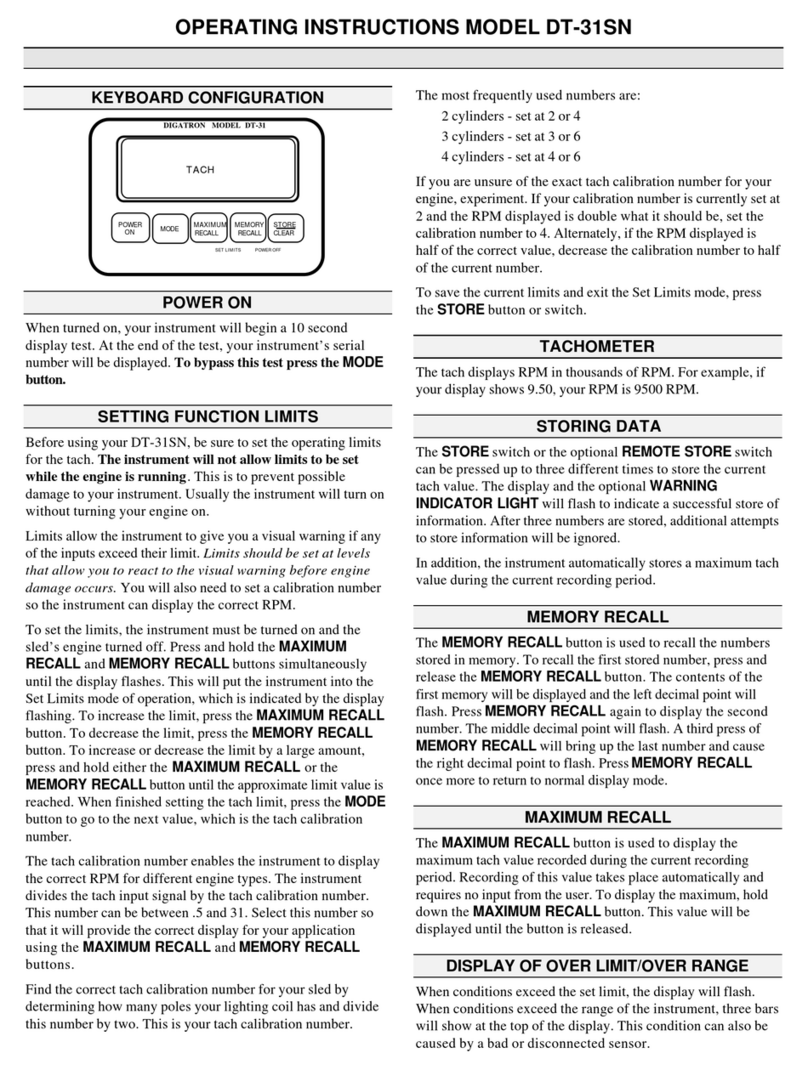
Digatron
Digatron DT-31SN User manual
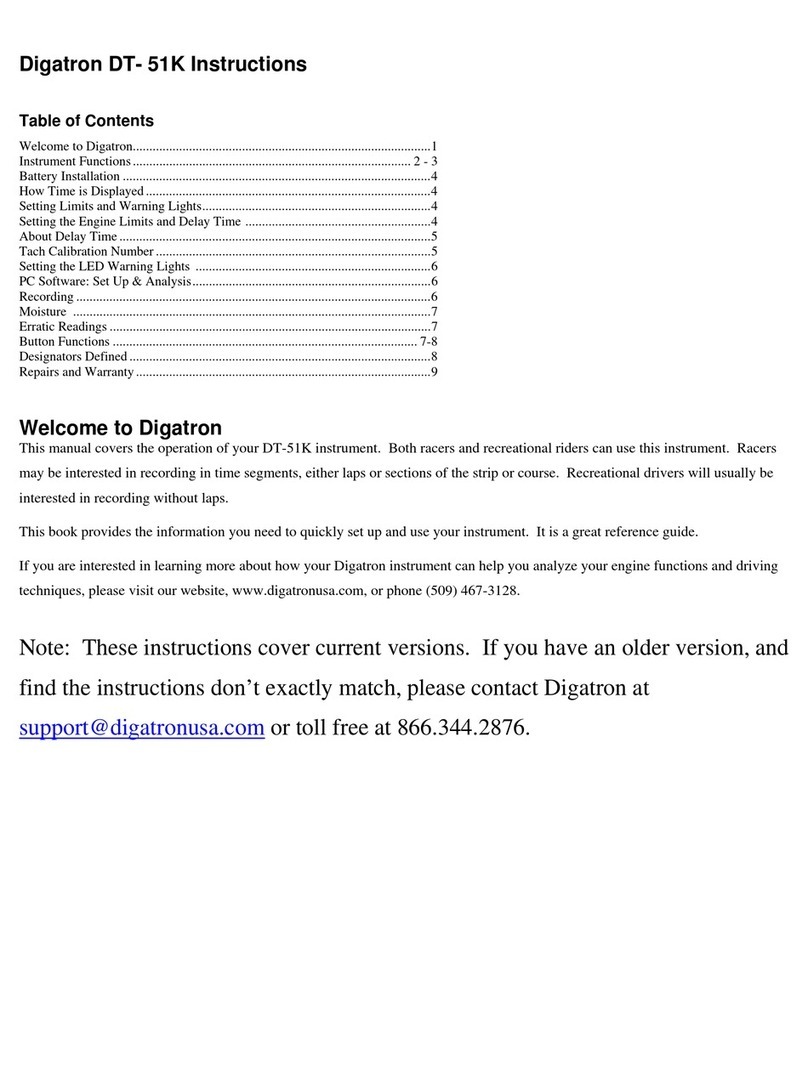
Digatron
Digatron DT- 51K User manual
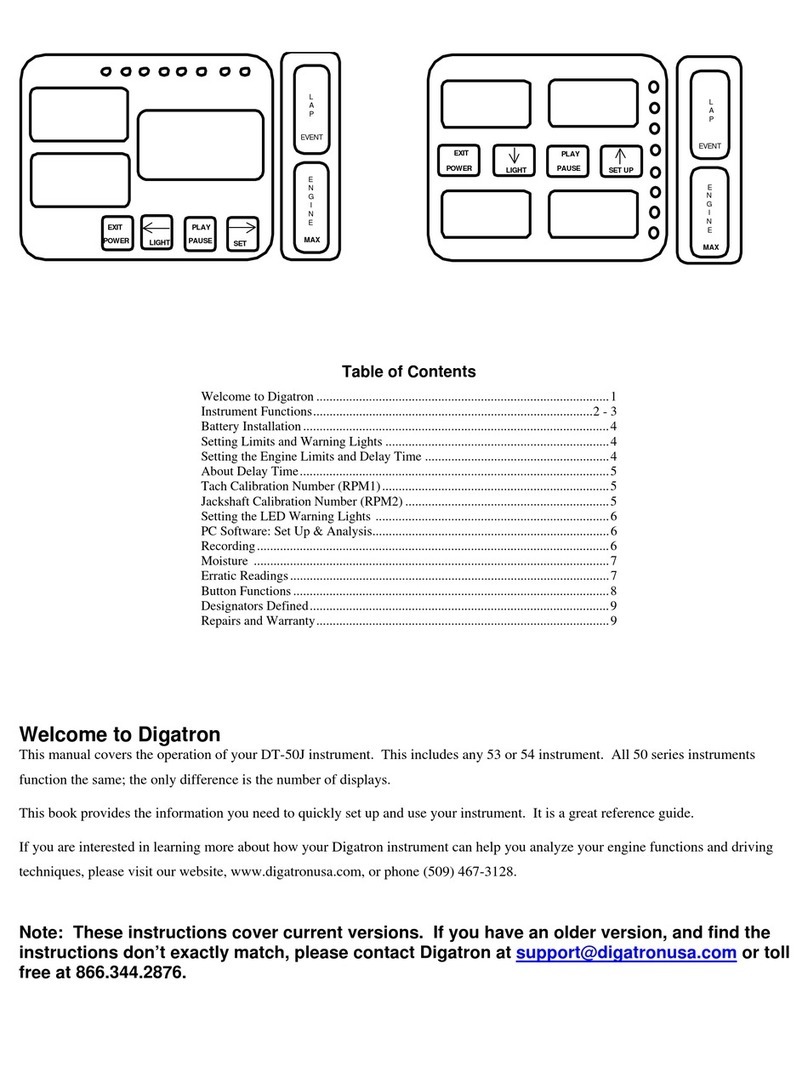
Digatron
Digatron DT-50J User manual
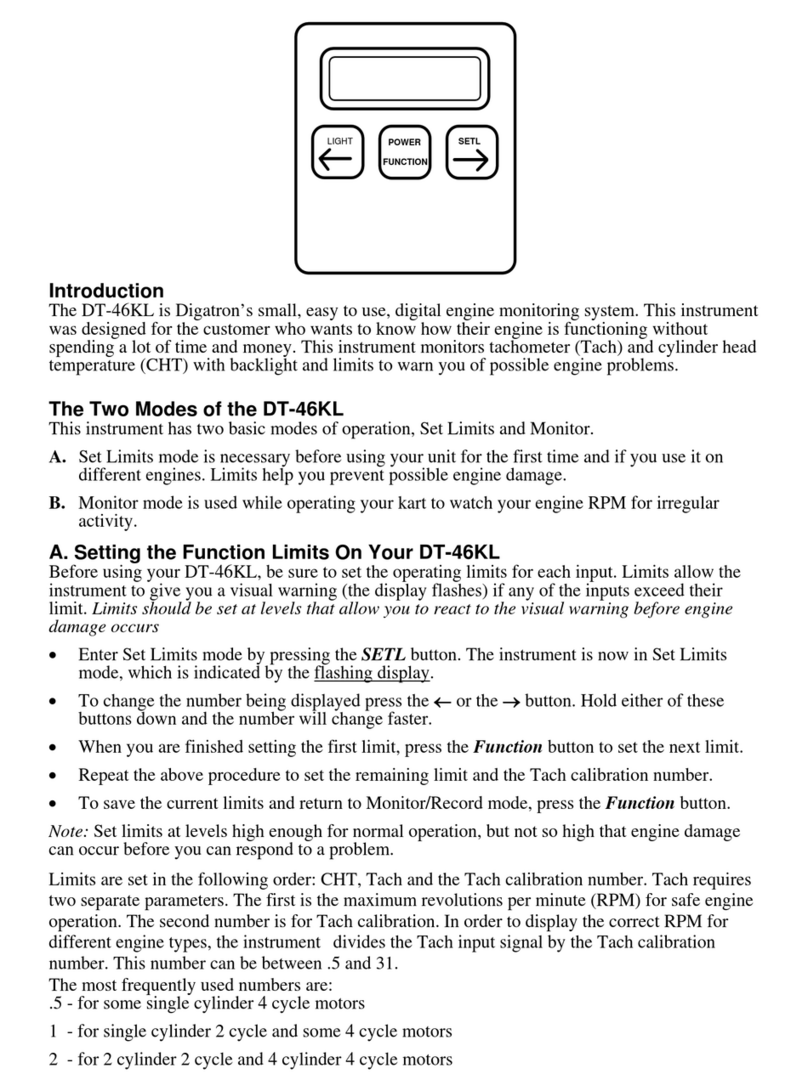
Digatron
Digatron DT-46KL User manual
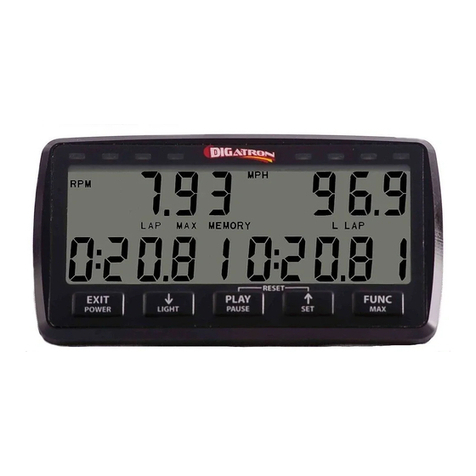
Digatron
Digatron DT- 31K LT User manual
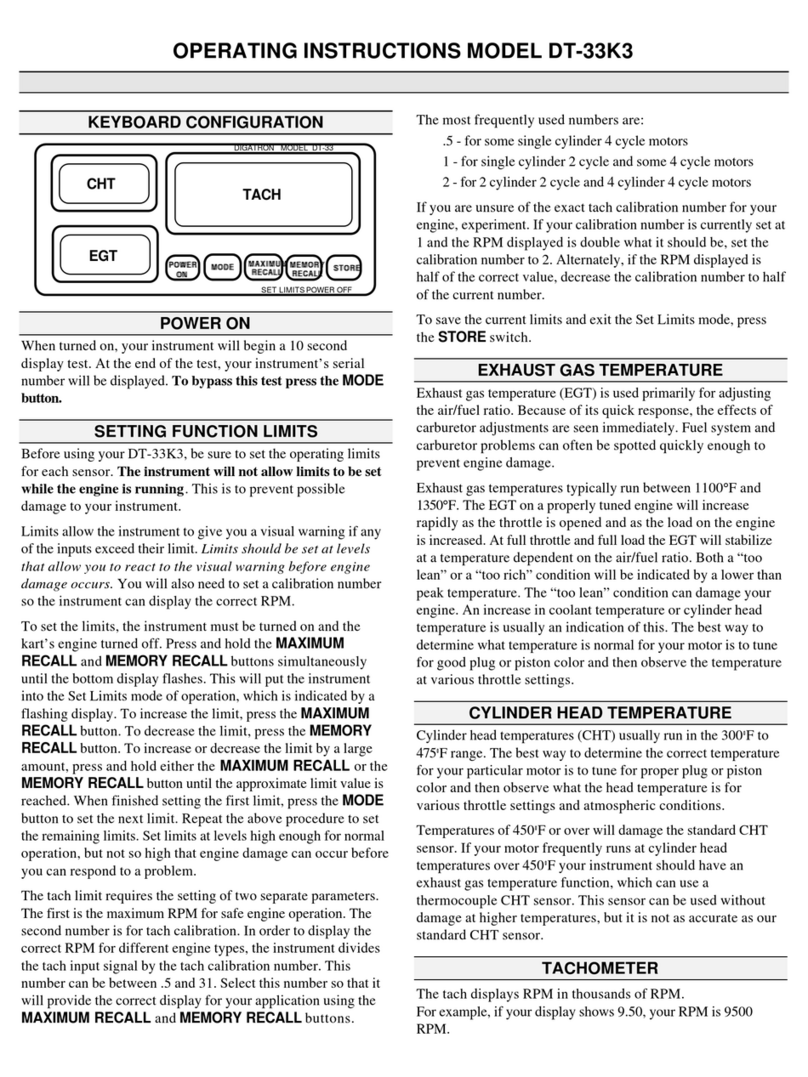
Digatron
Digatron DT-33K3 User manual
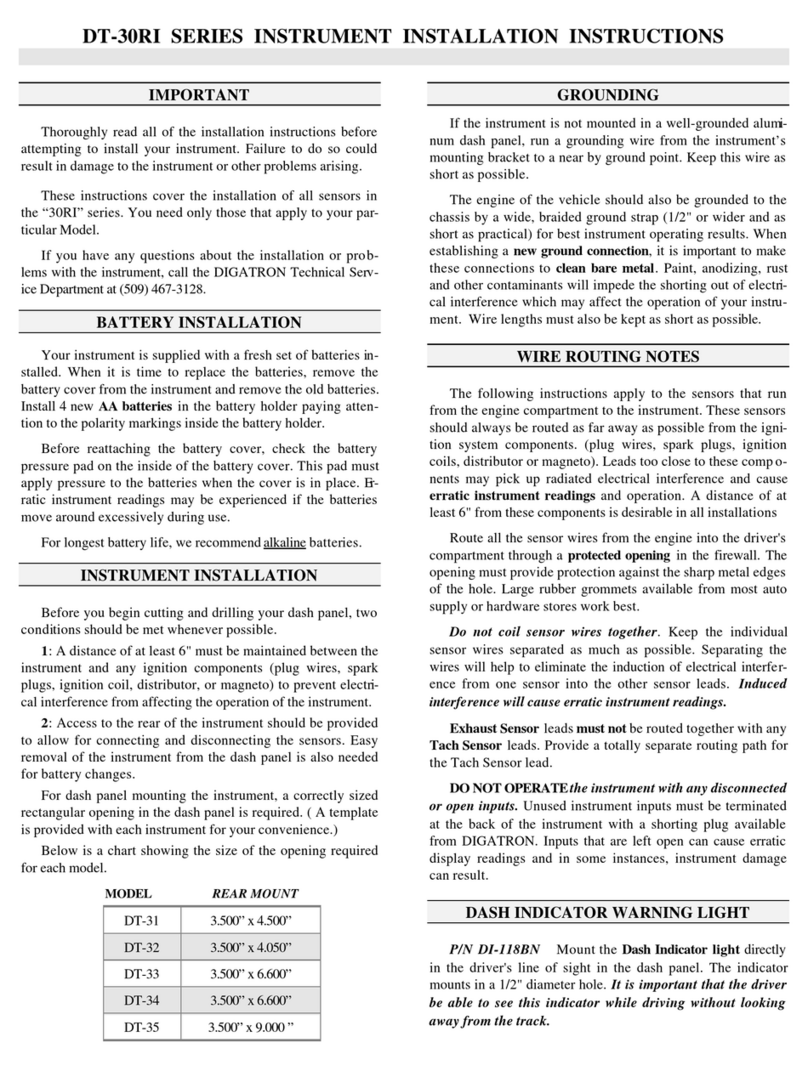
Digatron
Digatron DT-31RI User manual
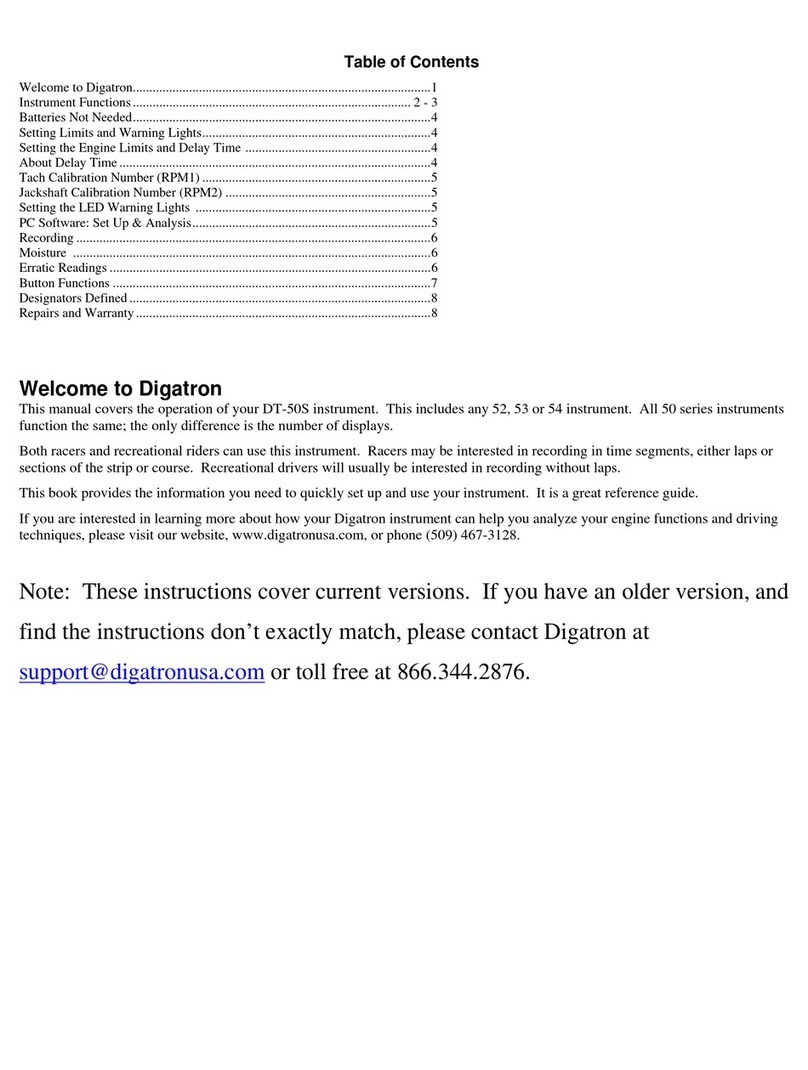
Digatron
Digatron DT-50S User manual
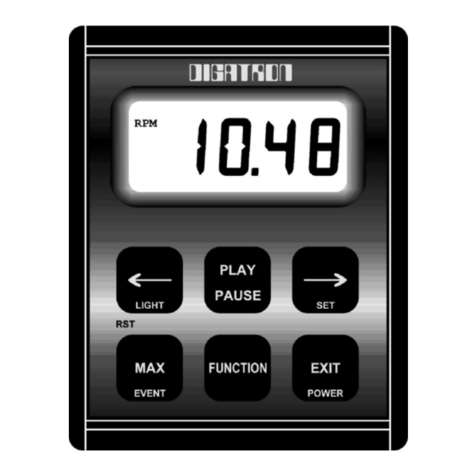
Digatron
Digatron DT-40K User manual
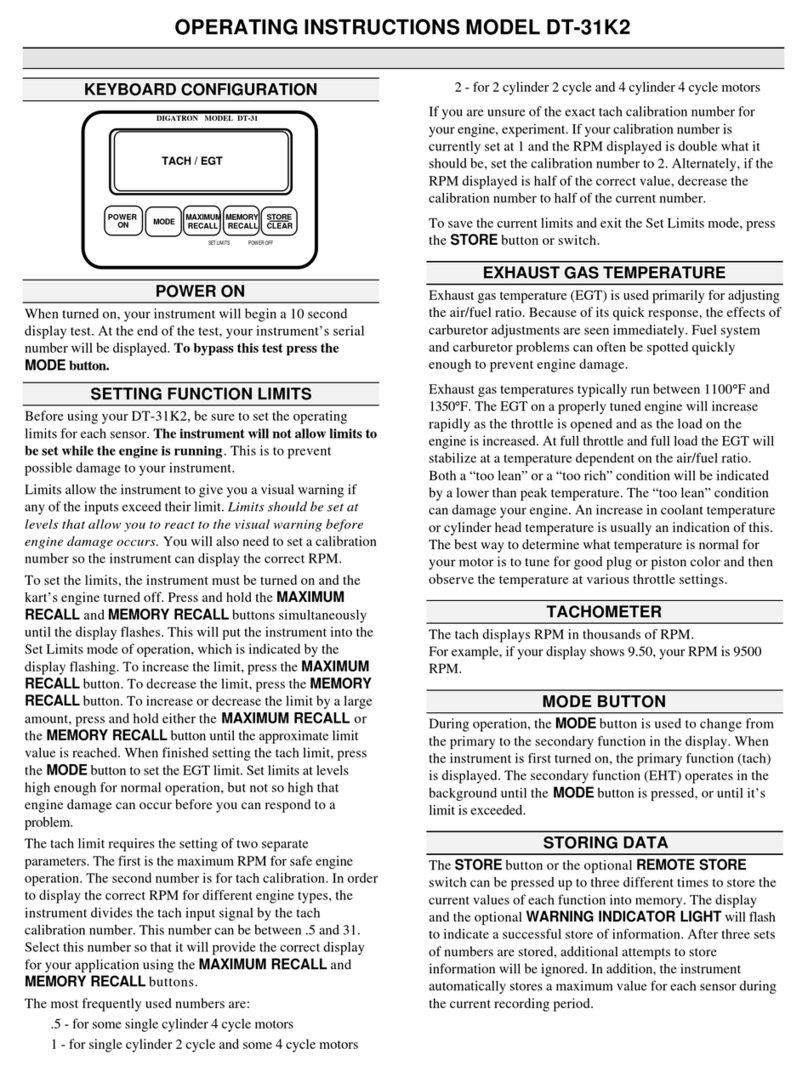
Digatron
Digatron DT-31K2 User manual
Popular Measuring Instrument manuals by other brands

IFM Electronic
IFM Electronic efector 300 SV Series operating instructions

Ninglu
Ninglu AM706 Operation & installation manual

Berner
Berner 43345 operating instructions
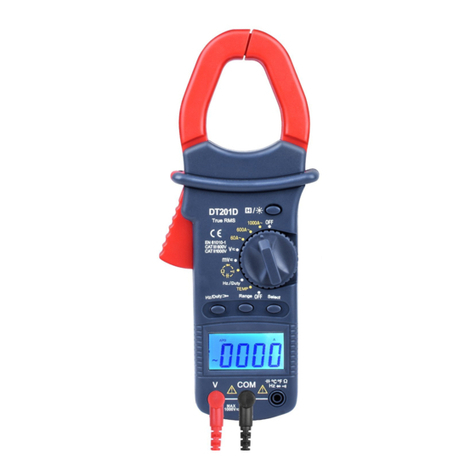
AstroAI
AstroAI DT201D Operator's instruction manual
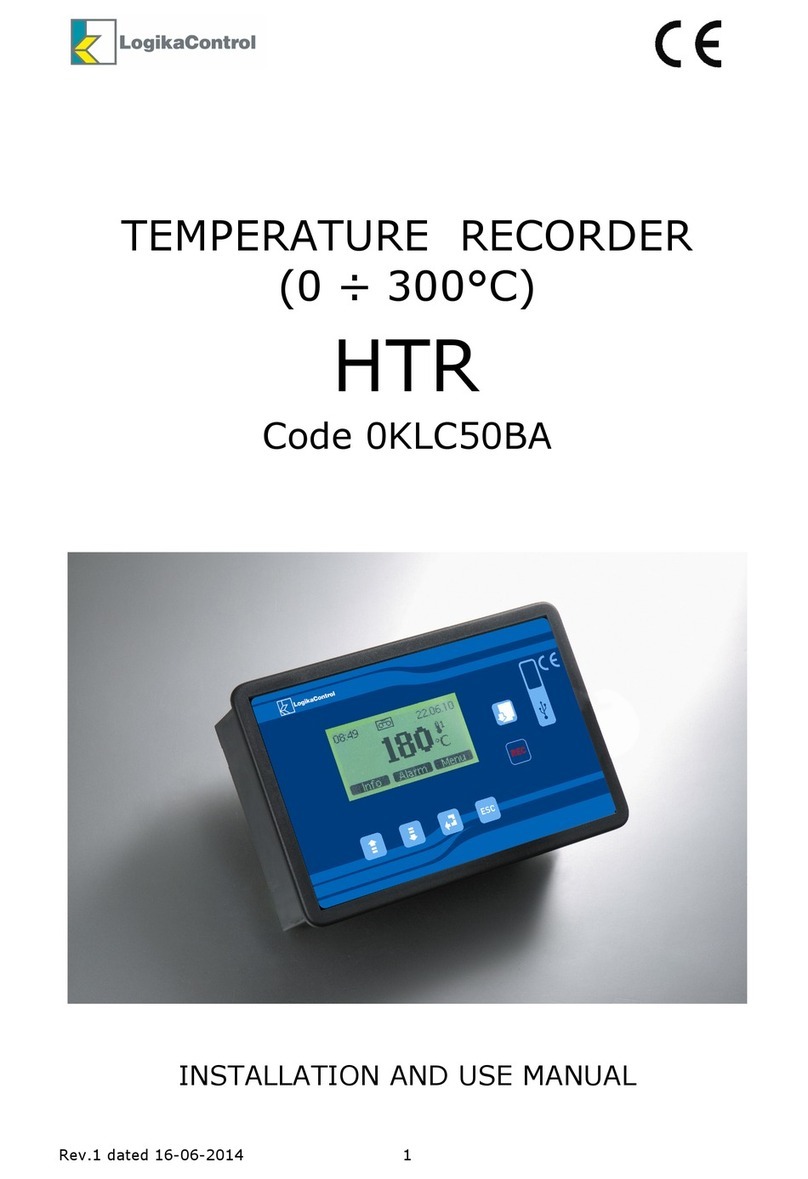
LogikaControl
LogikaControl HTR Installation and use manual
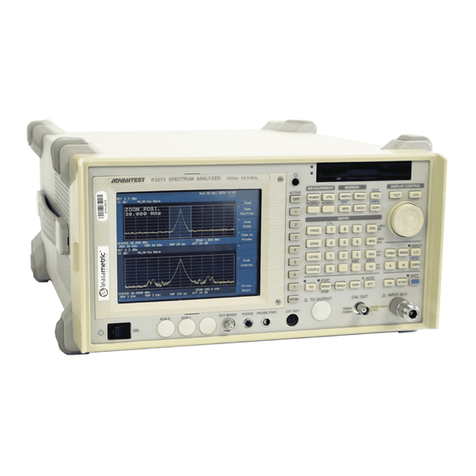
ADVANTEST
ADVANTEST R3267 series Operation manual
